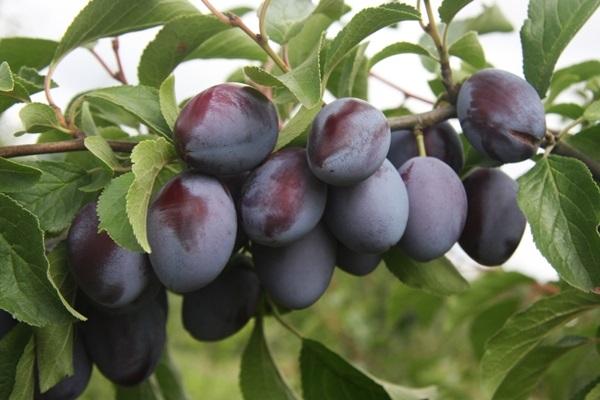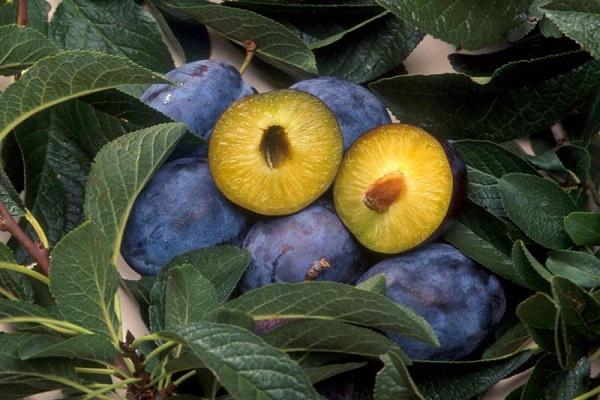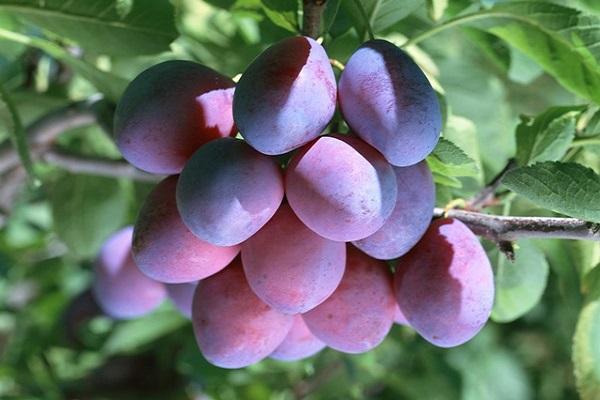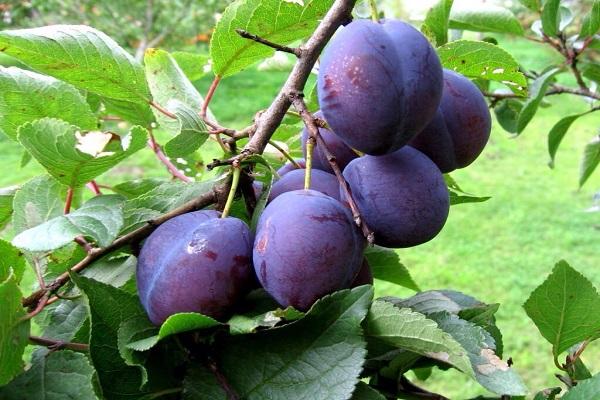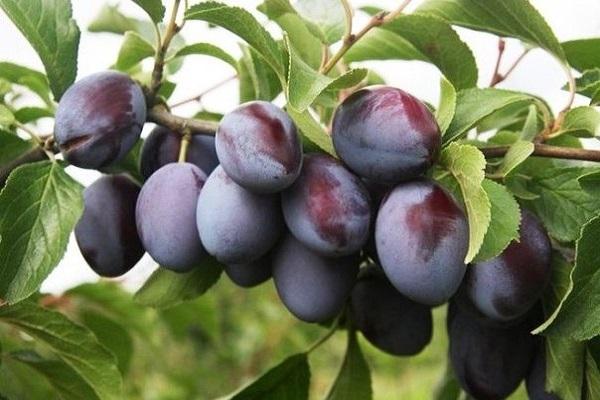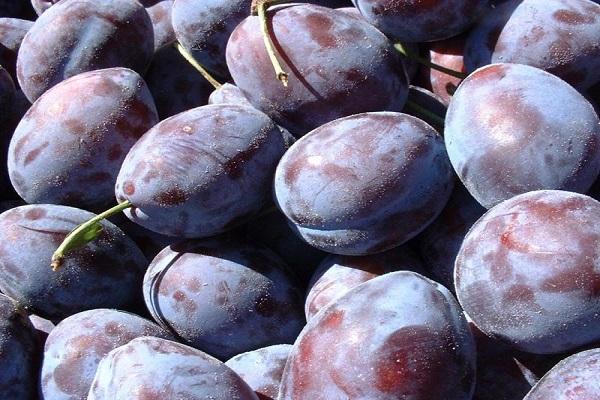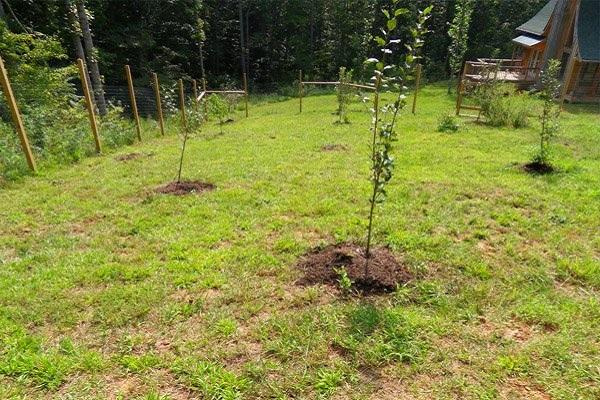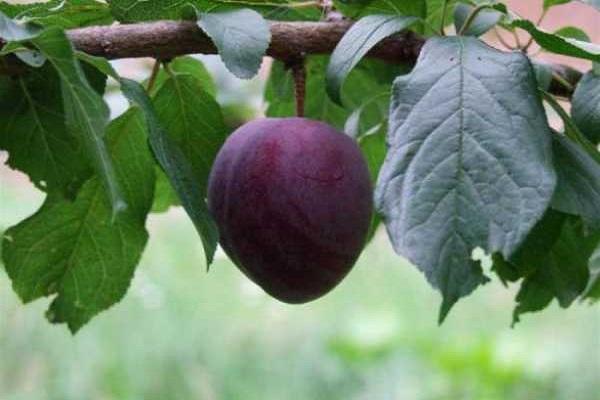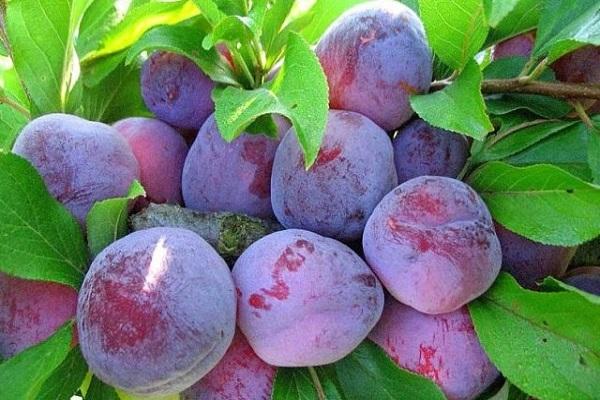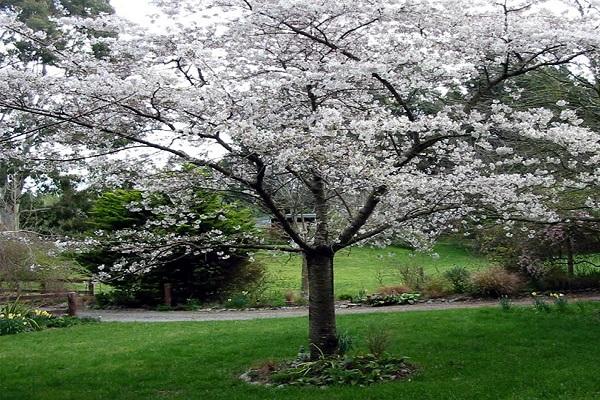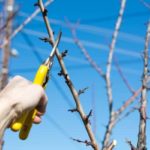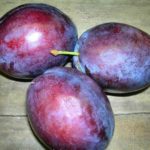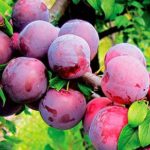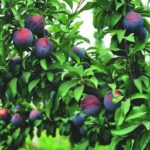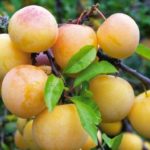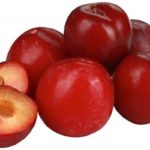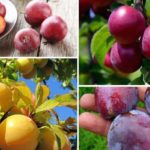The large-fruited Bogatyrskaya plum, which is relatively undemanding to growing conditions, is very popular among gardening enthusiasts. It is planted almost everywhere, both in regions with warm climates and harsh winters. The fruit crop is resistant to adverse environmental factors. To harvest a rich and tasty harvest, it is enough to familiarize yourself with the features of agricultural technology of the Bogatyrskaya plum, its strengths and weaknesses.
- History of selection of plum Bogatyrskaya
- Description and distinctive features
- Characteristics of culture
- Resistance to dry climates and frosts
- What diseases and parasites are dangerous for trees?
- Varieties - pollinators
- Productivity and fruiting
- Storage and use of fruits
- Positive and negative sides: is it worth planting?
- Growing a tree on the site
- Choosing the time for planting in the ground
- The optimal place for a plum
- Favorable and Undesirable Neighbors
- Selection and preparation of seedlings
- Step by step planting process
- Features of caring for the variety
- Watering
- Top dressing
- Harvest rationing
- Tree crown formation
- When and how to prune a mature tree
- Loosening and mulching the tree trunk circle
- Preparing the tree for winter
- Reviews from experienced gardeners about the variety
History of selection of plum Bogatyrskaya
Bogatyr, as this variety is also called, was obtained as a result of breeding work carried out by R.V. Korneev and V.A. Korneev. His parental pair was the Gigantic and the Hungarian local. The place where the Bogatyrskaya plum appeared is the Dubovsky stronghold. In 1987, the variety was included in the State Register.
Description and distinctive features
Plum Bogatyrskaya is a medium-sized plant. Its moderately thickened crown has a rounded shape. The trunk and skeletal branches have flaky gray bark, shoots of moderate thickness grow from the central conductor at an acute angle. Cone-shaped buds are small in size.
Corrugated sheet plates are distinguished by their ovoid shape. Their outer side is dark green in color, and the inner side is light. The long petioles are pubescent; the inflorescence is formed by 2-3 white flowers.
Fruit formation occurs on last year's growths, bouquet branches, and spurs. Bogatyrskaya plum is known for its large elongated fruits, their weight is 30-60 grams. The moderately dense skin changes its color from dark purple to black as it ripens.
The taste qualities of Bogatyrskaya plum are characterized as high.The yellow-green pulp is juicy and has a sweet, harmonious taste with notes of honey. The juice has virtually no color.
The Bogatyrskaya plum has a tendency to be overloaded with the harvest, which often causes damage to the branches.
Characteristics of culture
To know what to look for when growing Bogatyrskaya plum, you need to become more familiar with its main characteristics.
Resistance to dry climates and frosts
If dry weather does not last long, then the Bogatyrskaya plum tolerates it painlessly. But it is better to carry out irrigation measures once every 10-12 days. Due to the high degree of frost resistance, the Bogatyrskaya plum does not require additional shelter for the winter.
What diseases and parasites are dangerous for trees?
Bogatyrskaya plum is positioned as a plant with increased immunity to moniliosis, fruit rot and hole spot. In addition, the crop is not susceptible to fruit cracking. Danger in the form of fungal infections can threaten the plant only in the event of prolonged rains and excessive humidity. A high level of resistance is also observed in relation to harmful insects.
Varieties - pollinators
Since the Bogatyrskaya plum is a self-pollinating tree on which both female and male flowers are present, it is not necessary to place other varieties of plums nearby. Only to increase yields will the presence of pollinators be justified. The flowering phase of the Bogatyrskaya plum occurs at the end of spring, the formation of fruits and their ripening - in the last days of summer.
Productivity and fruiting
The productivity of the Bogatyrskaya plum is good, the harvest ripens every year. As the tree matures, the volume of production increases.From one garden planting it is possible to collect up to 50 kilograms of blue fruits with excellent taste; an adult plant can produce 85 kilograms.
Fruiting of the plum begins 5 years after the seedling is identified for a permanent place. You can harvest a crop from Bogatyr for 25 years if you provide it with appropriate growing conditions and care.
Storage and use of fruits
It is recommended to harvest the Bogatyrskaya plum 6 days before it reaches full maturity. The fruits are versatile; they can be used both as a raw material for making homemade preparations and for fresh consumption. Plums are used to make jam, juices, desserts, and tinctures.
Thanks to the dense skin, the crop is not afraid of transportation over long distances. Mechanical harvesting of fruits is also possible. In the refrigerator, plums retain their commercial and consumer qualities only for 2 weeks.
Positive and negative sides: is it worth planting?
Among the strengths of the Bogatyrskaya plum, gardening enthusiasts note:
- self-fertility;
- high level of frost resistance;
- large fruit;
- increased immunity to major diseases and parasitic individuals;
- prospects of the variety;
- excellent taste and product characteristics;
- regular and abundant fruiting;
- universal purpose of fruits.
But the Bogatyrskaya plum, despite a whole list of advantages, also has its drawback:
- Due to the rich harvest, branches often break off.
It is worth planting a fruit crop on a personal plot, since it has all the signs of a hardy and high-yielding plant.
Growing a tree on the site
In order for a garden plant to actively grow and develop, you need to know when it is best to plant it and what recommendations to follow.
Choosing the time for planting in the ground
The optimal time for planting seedlings is spring. It is recommended to carry out planting work in early April, when the soil has already warmed up sufficiently. It is better to plant the plant while it is still dormant.
The optimal place for a plum
Seedlings take root faster if the planting site is chosen in a well-lit clearing protected from draft winds. It is more advisable to place plants in a row - from north to south. For Bogatyrskaya plum, non-steep slopes, either southern or eastern, are preferable.
In order to avoid future problems with trees, so that they are not destroyed by cold fog, the planting site must be chosen in high areas. The soil must have good moisture and air permeability.
For Bogatyrskaya plum, sandy loam soil enriched with useful components is acceptable.
Favorable and Undesirable Neighbors
It is not advisable to plant Bogatyrskaya plum next to walnut trees, especially for walnuts and hazels, which grow in the central regions. Also, plums do not like apple or pear trees nearby; the distance between them should be 3-4 meters. Black currant bushes planted nearby have a beneficial effect on the plant.
Selection and preparation of seedlings
It is best to purchase annual or biennial plants with well-developed root lobes from specialized retail outlets. It must be a healthy seedling without signs of disease, signs of rot or damage of various kinds. Specimens with an open root system should be treated with a solution of Kornevin or potassium permanganate. If young trees are sold in containers, they must be removed and inspected before planting.
Step by step planting process
The planting technology involves performing the following actions:
- Preparing the pit in the fall. Its dimensions should be 40 centimeters in depth and 80 centimeters in diameter. Until spring, the soil will become looser and the Bogatyrskaya plum will adapt and take root faster.
- Adding nutrients. The extracted soil is mixed with a bucket of manure, superphosphate (300 grams) and potassium salt (65 grams).
- Installation 15-20 centimeters from the center of the wooden peg.
- Placing a seedling on a mound of soil. If its root system has dried out a little, then it should be placed in a container of water for 8-10 hours.
- Sprinkling the roots and carefully compacting the soil so that there are no voids in the hole. The root collar should be 3-4 centimeters above the ground level.
- Forming a circle of grooves 10 centimeters deep 30 centimeters from the seedling.
- Water the plant with 40-50 liters of water.
It is possible to protect the roots of the Bogatyrskaya plum from overheating and drying out by using a mulch layer. Peat and humus are perfect for these purposes..
Features of caring for the variety
Among the main measures for caring for the Bogatyrskaya plum are: irrigation, loosening, adding nutrients, crown formation, protection from diseases and pests.
Watering
Bogatyrskaya plum responds gratefully to watering, especially at the stage of flowering and fruit ripening. Young plants are moistened at the rate of 30-40 liters of water per planting, and adults - 50-60 liters of water. The main thing is not to allow moisture to stagnate in the soil, otherwise there is a high probability of developing fungal infections.
Top dressing
Since sufficient quantities of fertilizer mixtures were already applied during planting, there is no need for feeding procedures in the first year. Only from the third year, Bogatyrskaya plum is fed with mineral complex compounds. In the fall, it is effective to use preparations with a high concentration of phosphorus and potassium, and nitrogen ones - at the end of the flowering phase. Fertilizers of organic origin are relevant in the summer.
Harvest rationing
To prevent the Bogatyrskaya plum from becoming overloaded with fruits, you need to tear off half of the ovaries, but it is recommended to do this in two passes:
- ¼ of the ovaries are removed when they reach the size of a hazelnut;
- another ¼ part is removed when the greenfinches double in size.
Tree crown formation
The next year after planting, all branches should be cut to the level of the ring influx, except for the three side branches and the central conductor. There should be shoots located at an angle of 45 degrees. In the third year, the second tier of the Bogatyrskaya plum is formed from two branches, the distance between them and the first tier should be 70-90 centimeters. The height of the main trunk should be 20-25 centimeters higher than the other branches.
The third tier of Bogatyrskaya plum is created at the coming of the year. It consists of two branches located at a distance of 50 centimeters from the second tier. In the future, branches that grow vertically and thicken the crown must be removed.
When and how to prune a mature tree
The timing of pruning is the end of March - the beginning of April, when the weather is warm and the air temperature is above 10 degrees. It is necessary to remove branches with signs of disease, frozen branches and those that intersect. Summer pruning is carried out only if necessary, if there are diseased shoots.It is not worth manipulating the tree in the fall, since it will not have time to recover before the cold weather.
Loosening and mulching the tree trunk circle
To prevent the roots of the Bogatyrskaya plum from experiencing oxygen starvation, the soil should be loosened after each moistening. To maintain moisture in the soil and against weeds, periodically add a bucket of humus to the tree trunk circle.
Preparing the tree for winter
Young plants are protected with straw, lutrasil, and dense fabric. This technique will also allow you to resist small rodents. The soil under the Bogatyrskaya plum tree is mulched with peat and dry grass.
Reviews from experienced gardeners about the variety
Plum Bogatyrskaya has proven itself exclusively on the positive side. Gardeners especially appreciate its frost resistance, increased immunity to diseases and large fruit.

